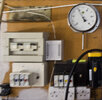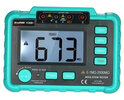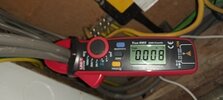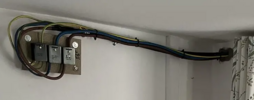My folks had a smart heater installed a couple of months back-during the install some seal or something was broken by the engineer. When another chap came to fix it, they discovered my folks were on a looped electrics system with their neighbour and said that it had to be changed as it’s now illegal
So national grid have been out and made the changes…however it’s left my folks with an issue with the consumer unit/fuse box. Just to note this was working perfectly before these works took place.
Basically my dad had to switch off the electric to test a UPS (separate issue with BT digital voice) so he flicked the master trip switch…but when he came to put it back on it wouldn’t work. National grid came out, and they managed to get it working by switching all the individual trips off, then putting main trip on, then switching the individual ones on one by one. They then sent out the contractors who did the cabling to check that was all ok.
Those contractors say the work they did was fine, but there’s now too much power for that consumer unit to handle, and that my parents have to arrange and pay for a new unit. This doesn’t feel right to me. At no point in these works did anyone suggest my folks would have to get any work done serstrly I’d pay for it. So to my mind this is national grids issue to fix? Am I right?
I’m also worried about the safety of it now. If they are right and there’s too much power for the consumer unit to handle is it now potentially unsafe? The only way they can get the leccy back on if they trip the main switch is this process of switching each individual trip off.
Both parents are in their 70s and classed as disabled so it’s a worry. Any advice appreciated.
So national grid have been out and made the changes…however it’s left my folks with an issue with the consumer unit/fuse box. Just to note this was working perfectly before these works took place.
Basically my dad had to switch off the electric to test a UPS (separate issue with BT digital voice) so he flicked the master trip switch…but when he came to put it back on it wouldn’t work. National grid came out, and they managed to get it working by switching all the individual trips off, then putting main trip on, then switching the individual ones on one by one. They then sent out the contractors who did the cabling to check that was all ok.
Those contractors say the work they did was fine, but there’s now too much power for that consumer unit to handle, and that my parents have to arrange and pay for a new unit. This doesn’t feel right to me. At no point in these works did anyone suggest my folks would have to get any work done serstrly I’d pay for it. So to my mind this is national grids issue to fix? Am I right?
I’m also worried about the safety of it now. If they are right and there’s too much power for the consumer unit to handle is it now potentially unsafe? The only way they can get the leccy back on if they trip the main switch is this process of switching each individual trip off.
Both parents are in their 70s and classed as disabled so it’s a worry. Any advice appreciated.





